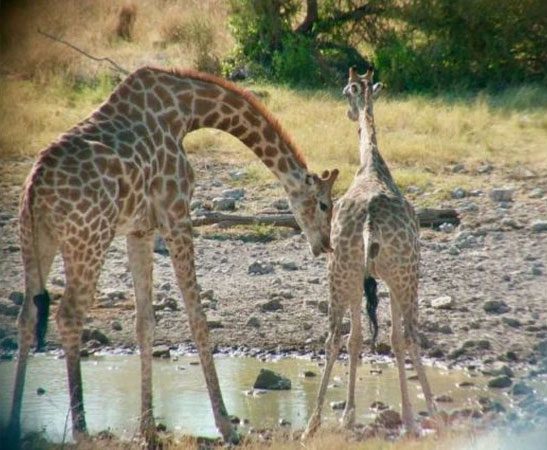Giraffes are the tallest animals among all terrestrial species. Their towering height can complicate mate finding and reproduction efforts.
Giraffes, like most other even-toed ungulates such as goats, antelopes, and deer, share a similar method for seeking mates. This involves smelling the urine of females to determine whether the “partner” is suitable.
However, due to their long, “awkward” necks, it is quite a challenge for giraffes to bend down to sniff urine puddles.
Curious about the answer, scientists closely observed giraffes to understand how they tackle this issue.
To their surprise, male giraffes have found a rather… unhygienic solution. While their mate is “relieving herself,” they dip their heads near the genital area to… check.
This method is necessary because the olfactory connection in giraffe noses is limited, likely due to their excessive height.
In some instances, male giraffes even encourage their mates to “get it on,” to have a chance to check more effectively. They can even catch “the stream” using a specialized opening above their mouths.

A giraffe “checking” its mate to see if she is a suitable partner. (Photo: Lynette Hart).
“It nudges the female a few times,” explains Lynette Hart, a zoologist at the University of California. “In this way, the male is saying: Please urinate right now. And surprisingly, the female is very willing to do so.”
By observing a herd of giraffes gathered at a watering hole in Etosha National Park (South Africa), Hart recounts witnessing males “tormenting” a single female approximately 102 times a day, just to find out if she is capable of giving birth.
This is one of the rare habits of giraffes when they lower their heads. Typically, doing this is too risky for them, as it makes giraffes vulnerable in dangerous situations.
According to the International Union for Conservation of Nature (IUCN), the population of giraffes in the wild continues to decline, primarily due to habitat loss, poaching, and climate change.
In 2016, a study projected that the number of giraffes could decrease by up to 40% in the next three decades. They are also considered one of the most vulnerable species on the IUCN’s list of threatened species.


















































